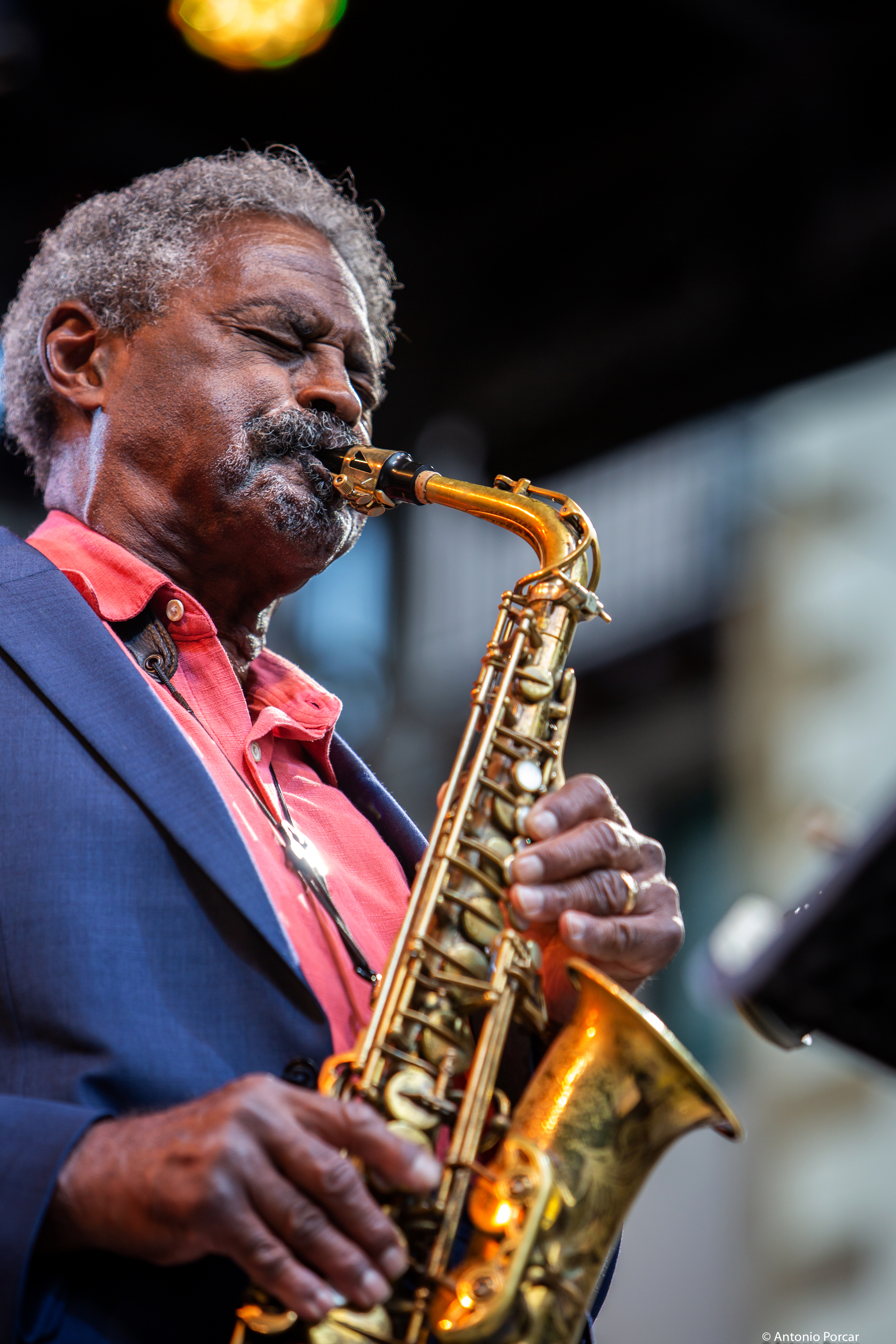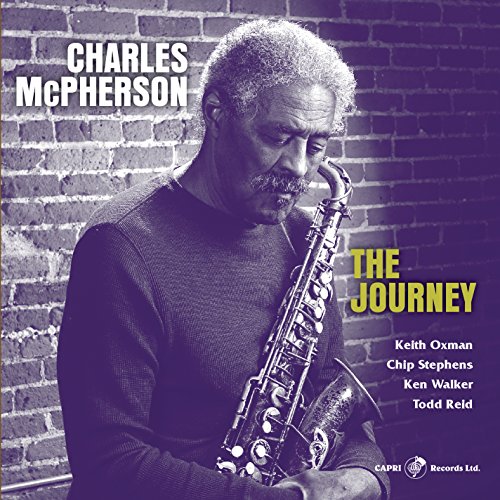Journey – Charles McPherson
This medium-up song has a stop-time A section and a rhythmic Latin groove in the modal bridge. The melody has an angular quality, largely based on fourths.
- Recording: Charles McPherson - The Journey
- Recorded on: April 21, 2014
- Label: Capri (74136-2)
- Concert Key: E-flat minor
- Vocal Range: , to
- Style: Swing (medium up)
- Alto Sax - Charles McPherson
- Tenor Sax - Keith Oxman
- Piano - Chip Stephens
- Bass - Ken Walker
- Drums - Todd Reid
0:00
0:00
Buy MP3
Video
- Description
- Historical Notes
- Solos
- Piano Corner
- Bass Corner
- Drum Corner
- Guitar Corner
- Inside & Beyond
- Minus You
Our lead sheets work for either single horn performances or for the original quintet recorded version. The only harmony notes the two horns play are shown in our editions (the last note before the bridge, and the coda). The bridge is different in the recorded two-horn arrangement, with the tenor sax playing the same melody, but waiting one measure before entering, except for the last four notes of each phrase which are played only three beats later.
This song has an angular sound based on fourths, both in the interval structure of the melody and the tonic chord, E♭m11. The opening melody phrase rises to A♭, the fourth of the key; this rising phrase is developed and then contrasted by the last phrase of the A section which descends in fourths.
The form of the piece is AABBA (each section is eight measures long). The first four measures of the A section have rhythm section stop-time figures filling in the long notes of the melody. In the fifth and sixth measures, the rhythm section plays more sustained figures, different between the first two A sections, before going to a 4-feel for two measures. This second half of the A section resolves to the key of A major. The rhythm section plays a two-measure pattern of hits through the bridge, held together with a Latin groove in the drums. The bridge melody repeats a four-measure phrase that falls and rises, outlining the same fourth-based interval structure as the first phrase of the A section. This phrase is repeated for eight measures of D♭7 and then up a half step for eight measures of D7. The C section is similar to A, but with different changes in the second half which descend in half steps.
The solo changes are a simplified version of the head, played with a 4-feel throughout without going into a Latin groove on the bridge. The coda starts at the seventh measure of C; the last note of the melody is held out for seven measures over a B6 chord, with sustained bass notes, followed by a final D♭maj9(♯11).
This song has an angular sound based on fourths, both in the interval structure of the melody and the tonic chord, E♭m11. The opening melody phrase rises to A♭, the fourth of the key; this rising phrase is developed and then contrasted by the last phrase of the A section which descends in fourths.
The form of the piece is AABBA (each section is eight measures long). The first four measures of the A section have rhythm section stop-time figures filling in the long notes of the melody. In the fifth and sixth measures, the rhythm section plays more sustained figures, different between the first two A sections, before going to a 4-feel for two measures. This second half of the A section resolves to the key of A major. The rhythm section plays a two-measure pattern of hits through the bridge, held together with a Latin groove in the drums. The bridge melody repeats a four-measure phrase that falls and rises, outlining the same fourth-based interval structure as the first phrase of the A section. This phrase is repeated for eight measures of D♭7 and then up a half step for eight measures of D7. The C section is similar to A, but with different changes in the second half which descend in half steps.
The solo changes are a simplified version of the head, played with a 4-feel throughout without going into a Latin groove on the bridge. The coda starts at the seventh measure of C; the last note of the melody is held out for seven measures over a B6 chord, with sustained bass notes, followed by a final D♭maj9(♯11).
Charles recorded with this quartet while he was performing with them in Denver, Colorado. This same quartet has also done two recordings with trombonist Curtis Fuller while Curtis was performing with them in the Denver area, including Down Home.
Related Songs
Email Send Journey to a friend
Send this page to a friend via email. Add your name or email in the first field. In the second, add one or more email addresses, separated by a comma.

Charles McPherson
born on July 24, 1939
Charles McPherson's new CD, "Jazz Dance Suites" is available. A product of his love and admiration for his daughter Camille, Charles wrote two suites of new music for the CD. Read more...
There was a problem.
...

